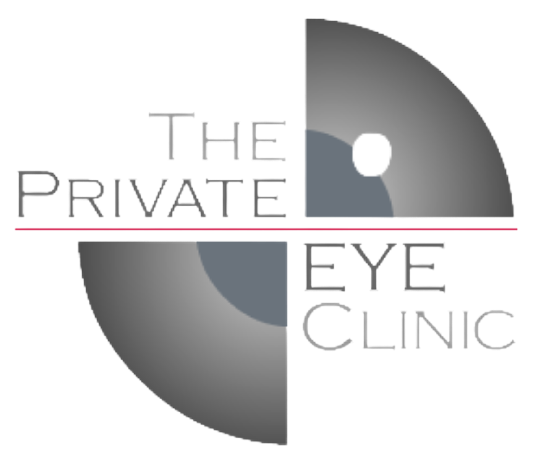
Botox Treatment For Strabismus
-
General Information
Botox (Botulinum toxin) has been used for the treatment of strabismus for about 20 years. It was originally developed in the hope that it would be an alternative to surgery.
When an extremely small quantity of Botox is injected into an eye muscle that is pulling the eye out of position, the drug causes TEMPORARY weakness in this muscle for some weeks. This usually causes a large overcorrection of the strabismus. During this time the opposite muscle pulls the eye across and tightens while the paralysed muscle is stretched. This weakening, stretching and tightening process may result in a more balanced position of the affected eye when the paralysis wears off.
-
Usual Procedure
Several drops of local anaesthetic are given and this usually makes the whole procedure painless or nearly so. Forceps are used to pinch the muscle, and a very fine needle is inserted into the muscle around the eye, positioned, and a tiny bit of Botox injected into the muscle.
The procedure takes about 5-6 minutes. Most patients leave the office feeling and looking fine. You need to wear an eyepad for 30 minutes.
-
When Is It Used?
It can be used:
1. To cure small degrees of strabismus including over - and under - corrections after surgery.
2. During surgery. This is particularly useful in a very large misalignment where we wish to restrict surgery to one eye only, and the usual amounts of surgery are unlikely to produce an adequate result.
3. In someone who has had multiple previous surgeries where further surgery is anticipated to be very difficult.
4. In conditions where we are uncertain of the final outcome, but wish to make the patient more comfortable and function better whilst we are waiting for that outcome e.g. sixth nerve paresis or thyroid eye disease.
The effect on horizontal misalignment has been some degree of permanent improvement in many cases. The effect on other misalignments is less predictable. Overall the effect is not as reliable as surgery for the same problem; the attraction is that it is simpler (and costs a lot less). If it doesn't work, surgery is still possible.
Botox injections can be repeated. Sometimes this is done to get a better or more permanent result. Sometimes this is done to treat an underlying deviation that will never get better and where surgery has been declined.
-
Problems After Botox
The injection takes 2-3 days to begin working, 1-2 weeks to get the greatest effect, and wears off over a few weeks.
During this time double vision and disorientation may be a problem and an eye patch may need to be worn for this. Do not have Botox if you cannot cope with a patch on the eye to be injected.
Sometimes, adjacent eye muscles are inadvertently affected and this can cause a droopy eyelid (about 15%: always wears off – may take some weeks) or a vertical up or down turning of the eye (about 15%: nearly always wears off).
Bruising and redness of the eye are uncommon and get better.
Previous surgery can make it difficult to treat the muscle and sometimes the injection is abandoned.
The commonest bad result is an inadequate result. The commonest unwanted bad result is a new vertical deviation (about 1%).
It is extremely rare for this technique to cause or threaten to cause a permanent visually serious problem, but this has been reported. Haemorrhage into a muscle, Haemorrhage around the eye requiring emergency surgery, and injection into the eye are potentially blinding: risk is about 1/5,000.
Patients with Thyroid Eye Disease
There is uncertainty about the correct dose for this condition. I usually start with the usual dose (5 units of Botox). If there is no response (or the response wears off very quickly – say, 1-2 weeks) then the dose is increased to 10 units. If there is no response (or the response wears off quickly) then the dose is increased to 15 and even 20 units. Repeat injections given within 4 weeks of the first one are billed at a lesser rate.
Bupivacaine Injections (BP)
We have known for a long time that BP can damage and lead to apparent scarring of a muscle. If this happens to a normal muscle then the patient is worse off. If this happens to a weak muscle then the weak muscle might end up being stronger. This has been the basis of Dr Allan Scott’s investigations of using BP (either on its own or in combination with Botox).
The commonest outcome from BP injection is a 5-6 degree improvement. At the time of writing this note (February 2012) there have probably been less 500 patients internationally treated with BP for strabismus over the last 5 years, so it is “experimental”. It seems to be close to 100% safe, and fairly effective for misalignments of 5-7 degrees.
-
Legal Status of Botox In Australia
In Australia using Botox for strabismus is "off label". In Australia the largest use for Botox is for wrinkles (it makes them go away for a few months); this is also "off label". The drug has been approved for strabismus by American Regulatory Authorities since 1989, and is approved by Regulatory Authorities in the United Kingdom, Canada and most European countries.
Botox is approved in Australia for use in cerebral palsy in children in doses far higher than used in strabismus, so there are no significant safety worries with the use of this drug.
-
Cost
The cost for the injection is $370 including the cost of Botox. There is usually a Medicare rebate of $117.50. A consultation fee of $150 often applies which attracts a Medicare rebate of $37.15.
Dr Kowal performed 60% of Botox injections for strabismus billed to Medicare in Victoria. July 14- June 18
Dr Kowal performed 10% of the Botox injections for strabismus billed to Medicare in Australia.July 14- June 18.
